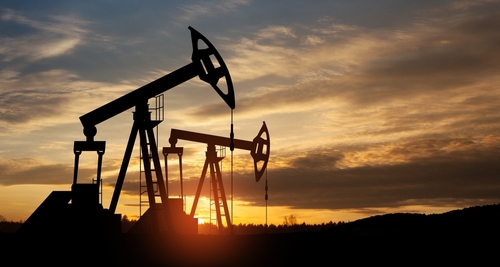EPA issues final rule on methane gas emissions

The U.S. Environmental Protection Agency (EPA) issued a final rule that is designed to reduce methane gas emissions and other harmful air pollutants from the oil and natural gas industry.
The announcement was made Dec. 2 by EPA Administrator Michael Regan and National Climate Advisor Ali Zaidi at the UN Climate Change Conference, known as COP28, in Dubai.
The EPA said that oil and natural gas operations are the nation’s largest industrial source of methane, which is more potent than carbon dioxide and is responsible for approximately one third of the warming from greenhouse gases. Sharp reductions in methane emissions are among the most critical actions the United States can take to slow the rate of climate change.
The final rule includes a suite of pollution reduction standards that address the largest sources of methane and other harmful pollutants at oil and gas facilities, including methane that leaks or is vented from equipment and processes. Specifically, it will:
- Phase in a requirement to eliminate routine flaring of natural gas that is produced by new oil wells;
- Require comprehensive monitoring for leaks of methane from well sites and compressor stations, while giving oil and gas companies flexibility to use low-cost and innovative methane monitoring technologies; and
- Establish standards that require reductions in emissions from high-emitting equipment like controllers, pumps, and storage tanks.
In addition, the final rule includes a Super Emitter Program that will utilize third-party expertise in remote sensing to detect large methane releases or leaks known as “super emitters.” Further, the rule clarifies how states can use their existing programs in plans for limiting methane emissions from existing sources. It gives states two years to submit their plans for EPA approval.
“On day one, President Biden restored America’s critical role as the global leader in confronting climate change, and today we’ve backed up that commitment with strong action, significantly slashing methane emissions and other air pollutants that endanger communities,” Regan said. “We’ve crafted these technology standards to advance American innovation and account for the industry’s leadership in accelerating methane technology.”
The final rule seeks to prevent an estimated 58 million tons of methane emissions from 2024 to 2038, the equivalent of 1.5 billion metric tons of carbon dioxide. In 2030 alone, the expected reductions are equivalent to 130 million metric tons of carbon dioxide – more than the annual emissions from 28 million gasoline cars. The rule would achieve a nearly 80 percent reduction below the future methane emissions expected without the rule.
Also, the EPA estimates that the final rule will protect public health by avoiding 16 million tons of volatile organic compounds from 2024 to 2038, along with 590,000 tons of toxic air pollutants like benzene and toluene. Further, it will prevent wasteful leaks and other releases of about 400 billion cubic feet of valuable fuel each year.
“From mobilizing billions in investment to plug orphaned wells, patch leaky pipes, and reclaim abandoned mines to setting strong standards that will cut pollution from the oil and gas sector, the Biden-Harris Administration is putting the full throw-weight of the federal government into slashing harmful methane pollution,” Zaidi said. “Over just the last year, the Administration has taken over 100 actions to implement the U.S. Methane Emissions Reduction Action Plan — steps that cut pollution, promote public health, create thousands of jobs, and lower energy costs for Americans.”
EPA estimates that the final rule will yield total net benefits of $97 billion to $98 billion dollars from 2024-2038, after taking into account the costs of compliance and savings from recovered natural gas.
The American Gas Association released a statement saying it is committed to providing safe, affordable, and reliable energy while helping customers and utilities to minimize their carbon footprint.
“Our industry has voluntarily invested heavily in reducing emissions and has made minimizing leaks a top priority, resulting in a decline in methane emissions from natural gas distribution systems of almost 70 percent,” AGA President and CEO Karen Harbert said. “As we continue to advance new technologies and approaches, this industry will play a critical role in helping achieve our nation’s energy and environmental goals.”
Following a complete review of the final rule, AGA and the Edison Electric Institute (EEI) plan to update their joint Natural Gas Sustainability Initiative Methane Intensity Protocol and related ESG templates to remain in line with the new regulations.
